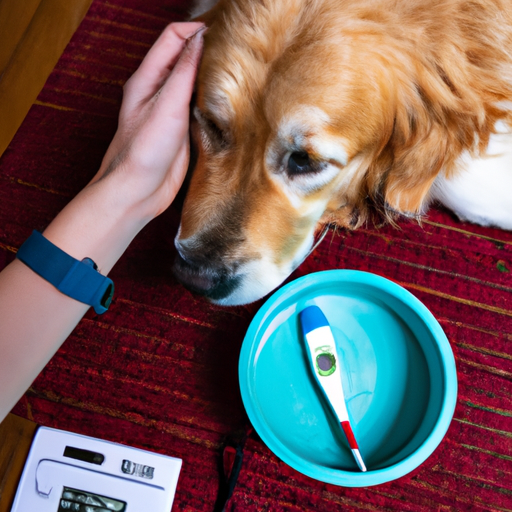Feeling your beloved pup’s hot forehead or dealing with their lethargy can be alarming. Like humans, dogs too can have fevers, and it’s essential to know how to get a dog’s fever down. This article will provide you with a step-by-step guide to manage and reduce your dog’s fever, ensuring quick recovery and restoring their tail-wagging cheerfulness.
- Understanding Canine Fever
- Identifying Fever in Dogs
- How to Reduce Fever in Dogs
- Prevention is Better Than Cure
- FAQs
Understanding Canine Fever
Just like humans, dogs can also get fevers as a response to inflammation or infection. A normal dog’s temperature can range from 100.5°F to 102.5°F. Anything above this range may indicate a fever. Depending on the underlying cause, it may be accompanied by other symptoms such as lethargy, vomiting, or loss of appetite.
Identifying Fever in Dogs
It can be challenging to identify fever in dogs as they can’t communicate their discomfort like humans. However, some signs can indicate your dog might have a fever:
- Lethargy or Depression: Dogs with a fever often act unusually quiet, listless or unresponsive.
- Loss of Appetite: If your dog refuses to eat, it might be a sign of fever.
- Shivering: Dogs often shiver when they have a fever, even in a warm environment.
- Warm Ears or Dry Nose: A dog’s ears or nose can be warmer than usual if they have a fever.
If you observe these symptoms, it’s crucial to get a proper diagnosis from a vet, as WebMD Pets advises.
How to Reduce Fever in Dogs
Once you’ve confirmed that your dog has a fever, the next step is to get it down. Here are some steps you can take:
- Consult a Vet: This is the first and most crucial step. Your vet will diagnose the underlying causes and may prescribe antibiotics or other medications.
- Keep Them Hydrated: Make sure your dog has access to fresh water at all times. You might need to encourage them to drink.
- Use a Cool Cloth: Dampen a cloth with cool water and apply it to your dog’s fur and paw pads.
- Provide a Cool Environment: If it’s hot, make sure your dog is in a cool, shaded area. You can even use a fan to help cool them down.
At this point, it’s worth mentioning that OneTopDog provides comprehensive guides on how to effectively care for your dogs during sickness and health.
Prevention is Better Than Cure
Preventing your dog from getting a fever in the first place is always better than treating it. Make sure your dog is up to date on all its vaccinations and regular vet check-ups. Maintain a balanced diet and regular exercise routine for your pet to keep their immune system strong. You can find more about dog nutrition and diet plans on OneTopDog’s nutrition guide.
FAQs
Q1: Can I use human medicine to reduce my dog’s fever?
No, never administer human medicine to your dog without consulting a vet. Some human medicines can be toxic to dogs.
Q2: How can I tell if my dog’s fever has gone down?
Regularly monitor your dog’s temperature using a rectal thermometer. If it returns to the normal range, then the fever has gone down.
Q3: When should I take my dog to the vet?
If your dog’s fever persists for more than 24 hours or if it’s accompanied by other severe symptoms, take your dog to the vet immediately.
Q4: Can I prevent my dog from getting a fever?
While you can’t prevent all causes of fever, regular vet check-ups, a balanced diet, and an up-to-date vaccination schedule can significantly reduce the risk.
Remember, your dog relies on you for its wellbeing. By knowing how to identify and treat a fever, you can ensure that your furry friend recovers quickly and returns to their playful self. If you’re looking for more ways to ensure your dog’s health and happiness, check out OneTopDog’s guide on dog wellness.



